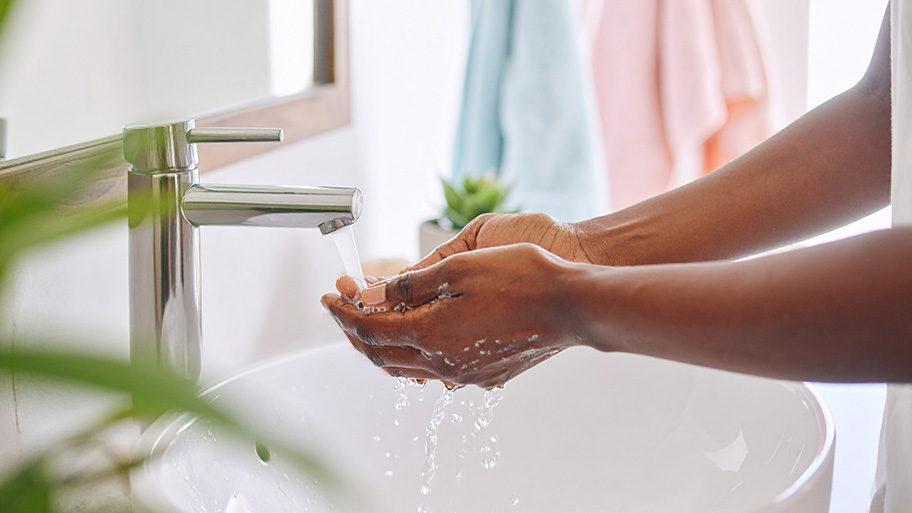
This guide to toilet installation cost covers what you can expect to pay when adding a new toilet to an existing or new bathroom.
A quick and easy process for improving your outdoor water supply


Replacing an outdoor faucet, also known as an outdoor spigot or hose bib, is a DIY project that can save you time and money while ensuring your outdoor water supply is in perfect working condition. Whether your existing spigot is leaking, damaged, or you simply want to upgrade to a more efficient model, this comprehensive guide will walk you through the process of replacing it. We'll cover everything from gathering the necessary tools and supplies to turning the water back on safely. So, let's roll up our sleeves and get started on this satisfying DIY project.
Before you start replacing your outdoor spigot, it's crucial to take some preliminary steps to ensure a smooth and safe process.
Rust and corrosion: Outdoor spigots are exposed to the elements and can accumulate rust over time. It's essential to take precautions to avoid injury when working with rusty parts. Wear gloves to protect your hands and use penetrating oil to help loosen any rusted components.
Measure the size of your old spigot fixture and the pipe it's attached to. Spigots come in various sizes, so getting one that fits snugly without any gaps is essential.
If you live in an area with freezing temperatures, consider switching to a frost-free hose bib. These prevent freezing and bursting during winter, but keep in mind that installing one may require additional steps like cutting plumbing pipes and soldering them back together.
Now that you're prepared, it's time to shut off the water supply to the outdoor spigot.
Locate the shut-off valve for your outdoor spigot. This valve is typically found inside your home's basement or crawl space.
Turn the valve clockwise to shut off the water supply to the spigot.
Go outside and open the old spigot to release any residual water that may be trapped in the line. This will help prevent water from gushing out when you remove the old spigot.
Removing the old spigot can be a bit tricky, especially if it's been in place for years and has become rusted or corroded. Use an adjustable wrench to loosen and remove any nuts or bolts securing the spigot to the wall or pipe. If the spigot is stuck due to rust, apply penetrating oil to the joints and let it sit for about 15 minutes to loosen the rust.
Carefully use a pipe wrench to turn and remove the old spigot counterclockwise, and be gentle to avoid damaging the pipe behind it.
Now that the old spigot is out of the way, it's time to install the new one. It’s a good idea to wrap plumber's tape, or Teflon tape, around the threads of the pipe where the spigot will be attached. This helps create a watertight seal. Then, position the new spigot over the taped area and secure it in place with screws or bolts. Use a screwdriver or wrench to tighten the connections.
If there are any gaps between the spigot and the wall, fill them with plumber's putty or exterior caulk to prevent water from seeping behind the spigot.
With the new spigot securely in place, it's time to turn the water supply back on. Return to the shut-off valve inside your home and turn the valve counterclockwise to restore the water supply to the outdoor spigot. Go outside and check for any leaks around the new spigot, and if you notice any, tighten the connections further or reapply plumber's tape as needed.
You might be wondering whether it's better to tackle this project yourself or hire a professional. There are advantages of both options. DIYing the replacement can save you money on labor costs, and it's an excellent opportunity to learn basic plumbing skills and gain confidence in handling home repairs. For simple spigot replacements, DIY can be a quick and straightforward process.
Hiring a local plumber, however, also has its benefits. Professionals have the experience and knowledge to handle complex situations, such as switching to a frost-free hose bib or dealing with extensive pipe issues. It's important to note that if you decide to switch to a frost-free hose bib, this may involve cutting and soldering pipes. If you're uncomfortable with these tasks, hiring a licensed plumber is recommended to ensure the job is done correctly and in compliance with local building codes. Plus, hiring a pro means you won’t have to lift a finger.
From average costs to expert advice, get all the answers you need to get your job done.

This guide to toilet installation cost covers what you can expect to pay when adding a new toilet to an existing or new bathroom.

We’ll cover the cost of replacing a shower or bathtub drain, whether you can tackle this repair yourself, and what other projects to consider along the way.

Wondering how much shower valve replacement costs? The answer depends on type, labor, and materials—but foresight and research can save you some money.

Plumbing a bathroom starts with knowing the steps for a successful DIY project. Follow this guide to learn how to plumb a bathroom yourself.

Frozen underground pipes can lead to costly damage to your home. Use this guide to learn how to safely thaw them, prevent future freezes, and protect your home from expensive water damage.

Cutting pipes can be easy, but this job requires some safety measures. Learn how to cut metal pipes quickly and safely for any plumbing project.